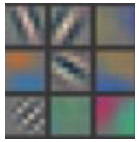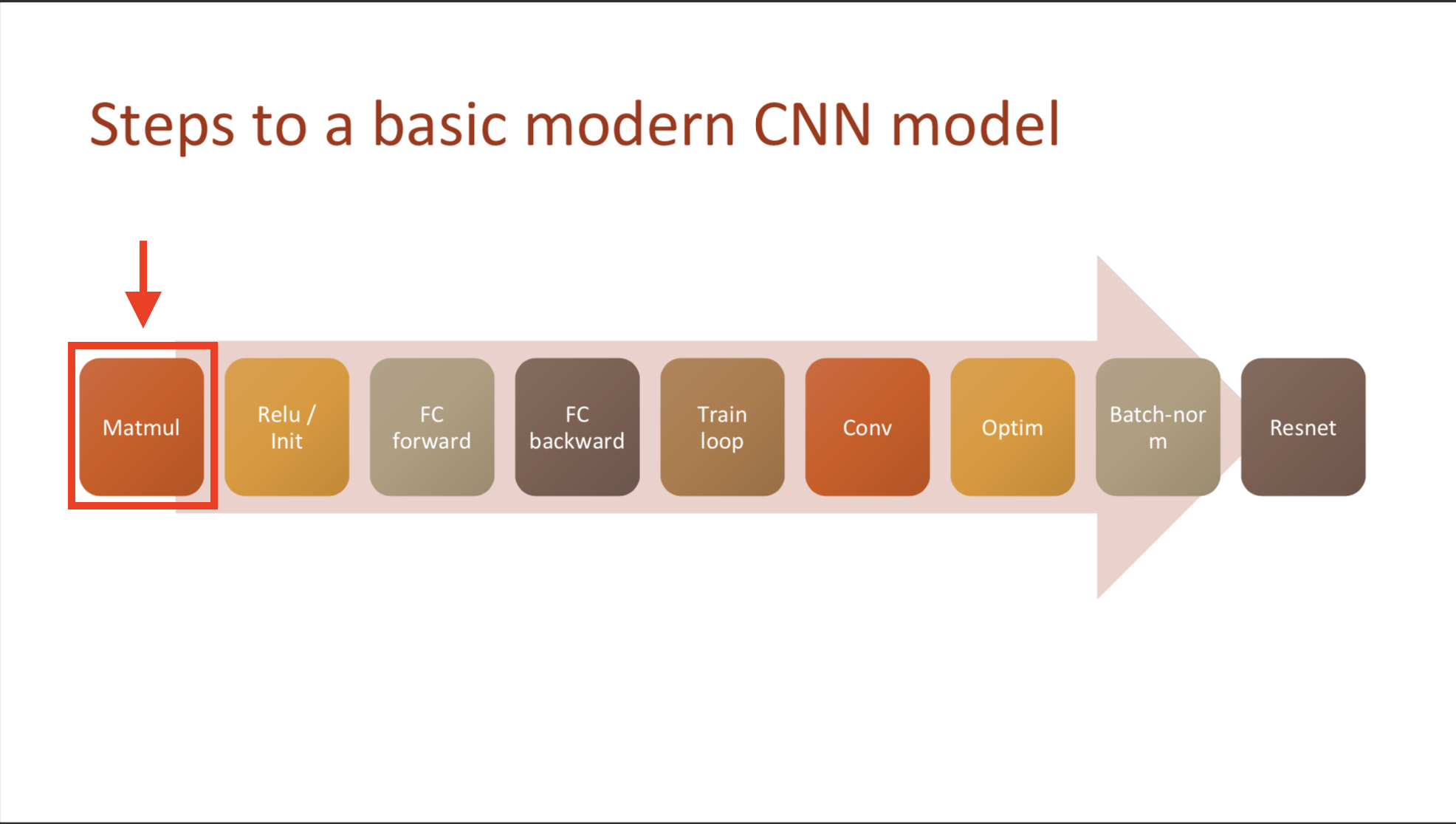Issues
1) Kaiming Initializtion in Pytorch was in trouble.1
2) Jeremy started to dig in, in lesson09, but I didn’t know why the size of tensor is 2 and even understand this spreadsheet data.3
Homework
Read Visualizing and Understanding Convolutional Networks paper
What is a convolution?
A convolutional neural network is that your red, green, and blue pixels go into the simple computation, and something comes out of that, and then the result of that goes into a second layer, and the result of that goes into the third layer and so forth.
Visualization
one kernel
- Refer this site for visualizing CNN filtering
Matthew D Zeiler & Rob Fergus Paper

Convolution can be represented as matmul
CNNs from different viewpoints
 {align-items: center;}
{align-items: center;}

-
[A B C D E F G H I J] is 3 by 3 image data flatten to vector.
- As a result, convolution is a just matrix just two things happens
- Some of entries are set to zeros at all the times
- same color always have the same weight. That called weight time / wegith sharing
- So, we can implement a convolution with matrix multiplication. But, we don’t do that because it’s slow!
Padding
- What most of libraries do is just put zeros asdie of matrix


- fast.ai uses reflection paddings (what is this? Jeremy said he uttered it)
Kernel has rank 3
- As standard picture input would be 4 5, it would be actually 3d, not 2d.
- If we make kernel as a 3x3 size, we pass over same kernel all the different Red, Green, Blue Pixels.
- This could make problem, because, if we want to detect frog, which is green, we would want more activations on the green(I made a test cell in my colab 6)
How can we find a side-edge, a gradient and area of constant weight?
Not top-edge!
- One kernel can find only the top-edge, so we should stack the kernels 7
- So, we pass it through bunch of kernels to the input images, and that process gives us height x width x corresponding number of kernels.

- Usually that number of chanel is 16
- And if we want to get the more channels and features, we should repeat that process
- This process gives rise to memory out of control, we do the stride
####
- 2 convolutional filters
- At a second layer, filter is 3x3x2 tensor, because to add up together the first layer’s channel.
Reference
-
Problem was math.sqrt(5) was not kaiming initialization formula, Implementation in Pytorch ↩
-
Why do computer use red, green and blue instead of primary colors ↩
-
Grayscale is a group of shades without any visible color. … Each of these dots has its own brightness level as well and, therefore, can be converted to grayscale. A grayscale image is one with all color information removed. ↩
-
stack kernel and make new rank of tensor at output, Lesson06-2019 ↩

 My life in Digital Product School - week 8/9/10
My life in Digital Product School - week 8/9/10